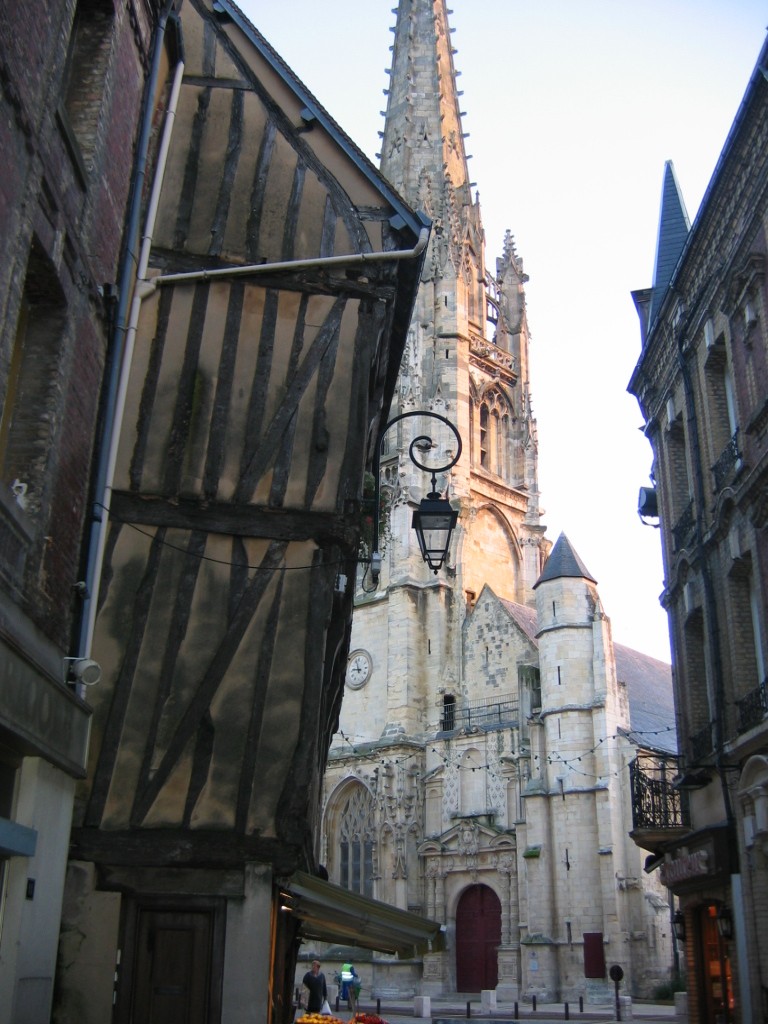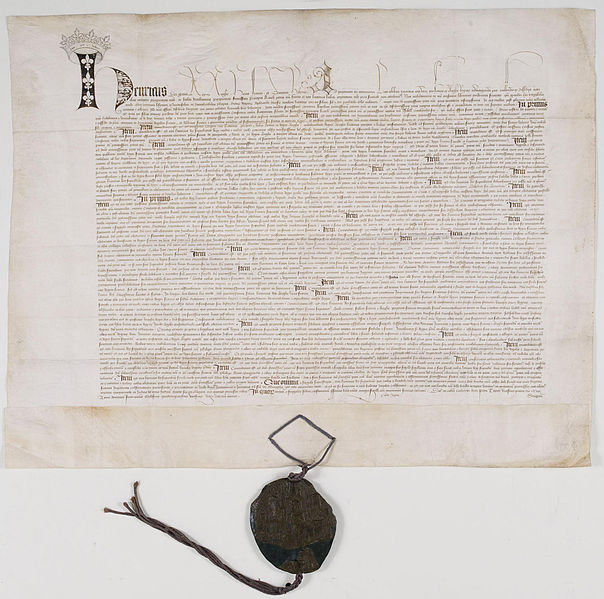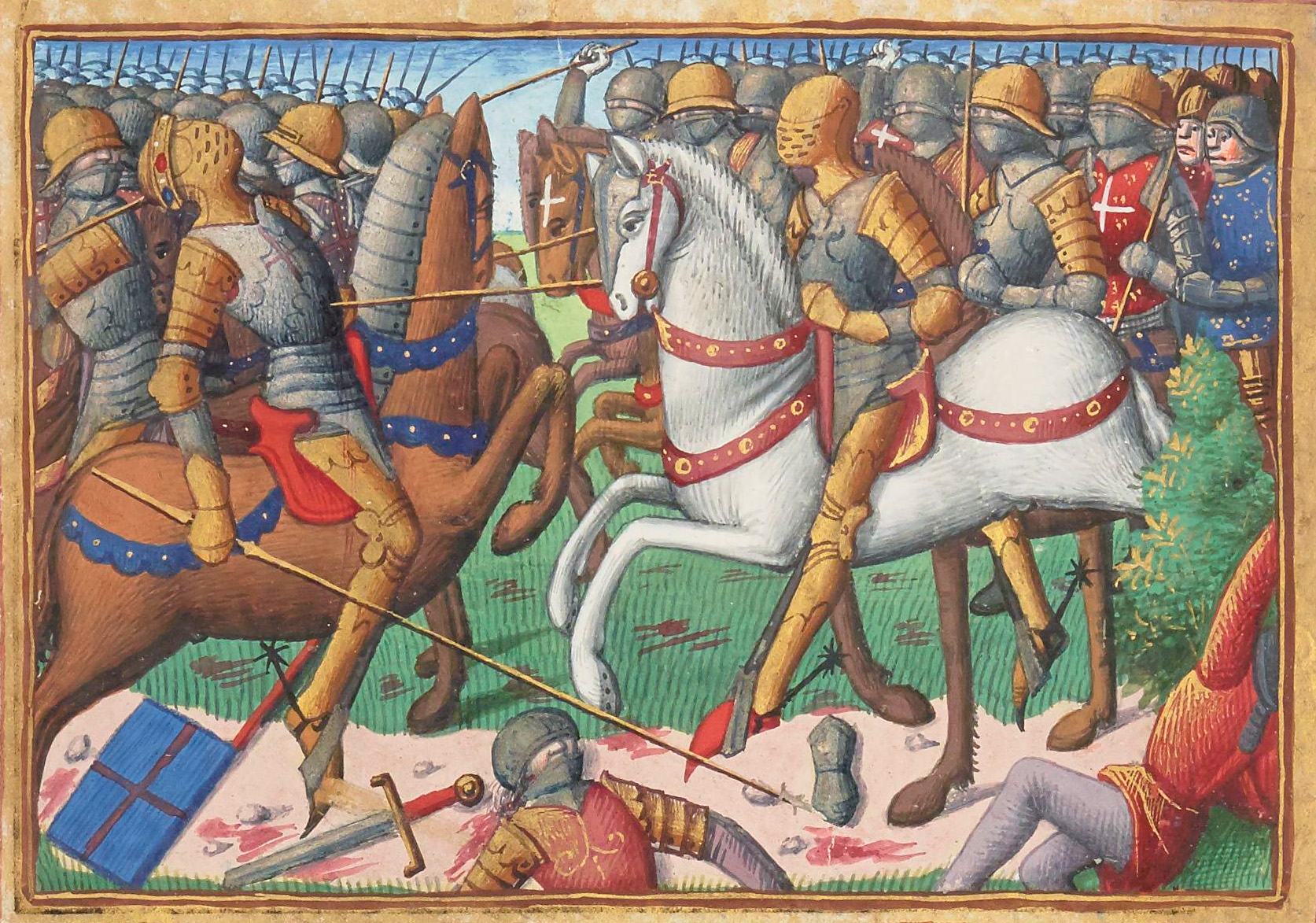 |
| Henry, Prince of Wales |
The War in France
Prince Henry was determined to involve himself in the affairs of France
weakened by Charles VI’s long bout of madness. The Armagnac faction agreed to recognise Henry IV’s claim to the Duchy of
Aquitaine in exchange for support in their feud with the Duke of Burgundy who had arranged the murder
of Charles VI’ brother, Louis d’Orléans.
Thomas,
accompanied by the Duke of York and his uncle Thomas Beaufort[i], landed at Cherbourg on 10th August 1412. Fastolf, still a squire[ii], followed in Thomas’s[iii] train to France; shown
in Fastolf’s accounts are the purchase of three white cloths costing £7 18s 4d[iv]
‘For the livery of the lord
beyond the sea.’[v]
The army
reached Blois on the 16th September,
but by now the Burgundians had occupied Berry and forced the Armagnac faction to come to terms. And now
Thomas was forced to come to terms too; at Buzançais he agreed to leave France by January 1413. The English
forces marched to Bordeaux where Fastolf was made deputy
Constable under Sir William Faryngdon.
.JPG/450px-Bordeaux_-_Juillet_2012_(71).JPG) |
| Bordeux |
On 10th
April Fastolf is recorded as receiving 765 gold crowns, part of the payment to
Thomas from the Armagnacs totalling 1,365 crowns[vi], clearly he was
considered trustworthy. Thomas of Lancaster returned to England in July 1413
and his uncle Thomas Beaufort was made Lieutenant of Aquitaine.
Beaufort now
arranged a punitive expedition into the Angoumois and the Saintonge[vii]. In June 1413 he took Soubise and Fastolf captured a French lord
and was made Captain of Soubise in his stead. In July an order was issued
staying proceedings on any indictments against Falstaff as he was overseas on
the king’s business.
On January
1415 an order was issued pertaining to Fastolf’s prisoner;
‘To the collectors of
customs and subsidies in the port of Great Yarmouth. Order, without taking
customs or subsidy, to suffer John Fastolf the king’s esquire to have 130 tons
of wine of Gascony………..for the ransom of the lord of Soubise, his prisoner.’[viii]
A New King
 |
| Henry Beaufort |
Henry IV
died on 20 March 1413; his son and heir was determined to improve England’s
standing abroad. His decision to invade France was popular with his subjects;
many saw the chance for profit. In November 1414 Bishop of Winchester Henry Beaufort[ix] told the Parliament that the king;
‘Deemed that the proper time
had arrived for the accomplishment of his purpose………..[he needed] wise and
faithful counsel from his vassals; strong and true support from his people; and
a copious subsidy from his subjects.’[x]
In June 1415
Fastolf joined the army mustered at Southampton; he indented
for ten men-at-arms and thirty archers. Fastolf’s rate of pay was 12d per day[xi]. The army landed on the
Normandy coast , near the village of Frileuse, on 14th August.
Within a very short period of time Fastolf must have performed some great feat
as on 29th January 1416 he was knighted and granted the lordship and
manor of Frileuse for life.
The siege of Harfleur took longer than Henry V had anticipated; commencing
on 18th August, the citizens held off until 22nd
September. Fastolf was part of the retinue of Michael de la Pole, the Earl of Suffolk, who died
shortly before the end of the siege. On 4th October 1415 Falstof was
sent home sick and missed the big event, the battle of Agincourt.
Henry had not permitted the sick to be sent home until after the siege had
ended.
Return to France
 |
| Harfleur |
Not long
after the great victory Fastolf was back in France, a knight under the command
of Thomas Beaufort who was placed in charge of Harfleur, which the French now
besieged in their turn. In the last week in November Fastolf led a raiding team
out of the town and foraged for supplies. In the new year the garrison was
strengthened and Beaufort led another foraging team, along with Fastolf and one
thousand horsemen.
This small
army encountered the French led by the Count of Armagnac who fought them at Valmont. The battle resulted in a victory for the English, but they
were not able to forage and retired back to Harfleur which was blockaded from
the sea by the French. Later Fastolf recollected that;
‘’A wretched cow’s head sold
for 6s 8d sterling[xii]
and the tongue for 40s[xiii]
and died English soldiers more than 500 in default of sustenance.’[xiv]
Harfleur was
eventually saved by the intervention of the king’s brother, John, Duke of Bedford, who led a sea borne rescue with a
victory over the French in a naval battle in the mouth of the Seine on 15th August 1416. The relief of Harfleur opened the way
for an English invasion of Normandy. At some point Fastolf was made Captain of Meulan following the departure of Thomas Rempston.
Normandy
 |
| Fecamp Abbey |
Fastolf was
involved in the invasion, being mentioned at a number of skirmishes but there is
no evidence of his attendance at the major sieges of Caen and Rouen in 1417. In Fresnay-le-Vicomte[xv] Fastolf was given a consignment of
bows and arrows in lieu of wages.
Rouen did not fall until January 1419, and
then the English took control of upper Normandy. Fastolf took control of Fécamp and was placed in charge of the garrison. He was ordered to take his
wages from the monastery. In August 1421 the monks were
complaining about the hardships that ensued;
 |
| Treaty of troyes |
‘Sir John Fastolf, knight,
Captain of the said place of Fécamp holds it and gathers everything into his
own hands, without giving anything back.’[xvi]
It was in
the autumn of 1419 that Henry V was able to take the opportunity offered by the
murder of the Duke of Burgundy, in which the dauphin was rumoured to be heavily
involved, and to ally with the new Duke, who was to become known as Philip the Good. Charles VI was persuaded by Henry to disinherit his son and
make Henry his heir, an agreement embodied in the Treaty of Troyes signed on 21st May 1420.
Loss of the King and His Brother
On 1st
December 1420 Henry and his new wife Katherine entered Paris in triumph. Thomas Beaufort took control of a
number of strategic fortresses around the city including the Bastille. On 24th January 1421 Fastolf was appointed Keeper of the
Bastille for a period of one year. He had twenty men-at-arms and sixty archers
under his direction.
 |
| Battle of Bauge |
Two months
later Thomas of Lancaster was killed while besieging Baugé; the battle on 21st March was a
victory for the French-Scottish army led by the Earl of Buchan and Gilbert de La Fayette, a Marshall of France. The victory meant that the Dauphin was able to
regain much of the lands lost north of the Loire. Thomas’s death meant the loss of a commander that Fastolf had been
serving for almost twenty years.
Thomas
Beaufort, now Duke of Exeter took control of Paris but rioting broke out and
Fastolf was involved in quelling the out of control Parisians.
 |
| Jean de Villiers de L'Isle Adam |
‘It fortuned that for the
arresting of the Lord
L’Isle Adam………..that all the commons of the city stood
suddenly to arms and rebelled against the Duke of Exeter………..{the Duke}was
coerced to take the Bastille for her defence. And at his coming the chief
question he demanded of the said Fastolf how well he was stored of great, of
wheat, of beans, pease and oats for horse feed and other victuals. [Fastolf]
replied for half a year and more sufficient. And it comforted greatly the
prince.’[xvii]
After Henry
V’s death Fastolf was replaced as commander of the Bastille by Sir Roger Fiennes, he also lost responsibility for Meulan. In June 1421
Fastolf was to be found camped before Orléans, which was now besieged[xviii]. This seems to have
been a short term arrangement and by 1423 he was present at the siege of
Meulan.
At the end
of February 1423 a joint French-Scottish army marched to relieve this important
bridge across the Seine, but marched away again after quarrelling with the
town’s councillors. Fastolf was one of those tasked with coming to an agreement
with the incensed townspeople and a surrender was agreed on 1st
March.
Bibliography
The Usurper
King – Marie Louise Bruce, The Rubicon Press 1998
The Hundred
Years War – Alfred H Burne, Folio Society 2005
The Real
Falstaff – Stephen Cooper, Pen & Sword Military 2010
The Reign of
King Henry VI – RA Griffiths, Sutton Publishing 1998
Agincourt –
Christopher Hibbert, Pan Books 1968
The
Fifteenth Century – EF Jacob, Oxford University Press 1997
Joan of Arc
– Edward Lucie-Smith, Penguin Books 2000
Orléans 1429
– David Nicolle, Osprey Publishing 2001
www.wikipedia.en
[i]
Later Duke of Exeter; Henry IV’s half brother, Thomas was the son of John of
Gaunt and his mistress and second wife Katherine Swynford
[ii]
Which makes his marriage to Millicent even more remarkable
[iii]
Now Duke of Clarence
[iv]
In 2013 the relative: real price of that commodity is £5,467.00 labour value of that commodity is £48,470.00 income value of that commodity is £159,100.00 www.measuringworth.com
[v]
The Real Falstaff - Cooper
[vi]
Worth £227 10s in 1413 and in 2013 the
relative: historic standard of living value of that income or wealth is £156,100.00 economic status value of that income or wealth is £4,889,000.00 economic power value of that income or wealth is £74,600,000.00 www.measuringworth.com
[viii]
The Real Falstaff - Cooper
[ix]
The king’s uncle and Chancellor
[x]
Agincourt - Hibbert
[xi]
In 2013 the relative: historic standard of
living value of that income or
wealth is £34.96
economic
status value of that income or
wealth is £896.30 economic power value
of that income or wealth is £13,700.00 www.measuringworth.com
[xii]
In 2013 the relative: real price of that commodity is £211.70 labour value of that commodity is £2,069.00 income value of that commodity is £6,052.00 www.measuringworth.com
[xiii]
In 2013 the relative: real price of that commodity is £1,271.00 labour value of that commodity is £12,430.00 income value of that commodity is £36,350.00 www.measuringworth.com
[xiv]
The Real Falstaff - Cooper
[xv]
Now Fresnay-sur-Sarthe
[xvi]
The Real Falstaff - Cooper
[xvii]
The Real Falstaff - Cooper
No comments:
Post a Comment
Note: only a member of this blog may post a comment.